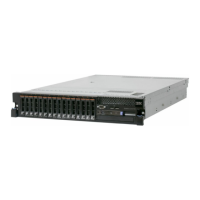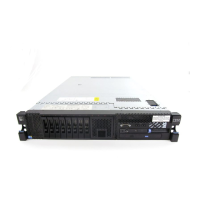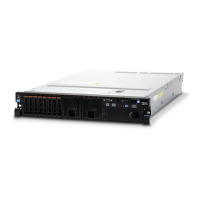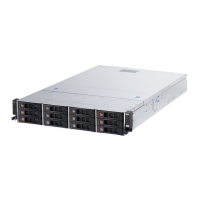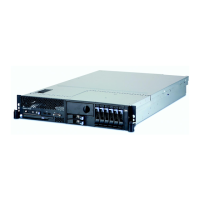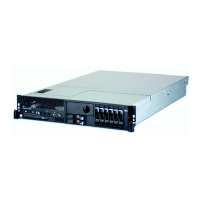To remove a ServeRAID SAS controller from a SAS riser card, complete the
following steps:
1. Read the safety information that begins on page vii and “Installation guidelines”
on page 169.
2. Turn off the server and peripheral devices and disconnect all power cords and
external cables.
3. Remove the cover (see “Removing the cover” on page 177).
4. Locate the SAS riser-card and controller assembly near the left-front corner of
the server.
5. Disconnect the SAS signal cables from the connectors on the SAS controller
(see “Internal cable routing and connectors” on page 172).
6. Remove the SAS controller assembly, which includes the SAS riser card, from
the server (see “Removing the SAS riser-card and controller assembly” on
page 197).
7. If the server is a tape-enabled-model, press the tab on the SAS-controller
retention bracket away from the SAS riser card and lift the right edge of the
SAS controller card out of the bracket.
8. Pull the SAS controller horizontally out of the connector on the SAS riser card.
Note: If you have installed the optional ServeRAID adapter advanced feature
key, remove it and keep it in future use (see “Removing an optional
ServeRAID adapter advanced feature key” on page 204).
9. If you are replacing the SAS controller card, then remove the battery but keep
the cables connected.
10. If you are instructed to return the ServeRAID SAS controller, follow all
packaging instructions, and use any packaging materials for shipping that are
supplied to you.
Installing a ServeRAID SAS controller on the SAS riser card
Important: If you have installed a 8-disk-drive optional expansion device in a
16-drive-capable server, the SAS controller is installed in a PCI riser-card assembly
and is installed and removed the same way as any other PCI adapter. Do not use
the instructions in this topic; use the instructions in “Installing a PCI adapter in a
PCI riser-card assembly” on page 191.
To ensure that a RAID adapter works correctly in your server, make sure that the
adapter firmware is at the latest level.
Important: Some cluster solutions require specific code levels or coordinated code
updates. If the device is part of a cluster solution, verify that the latest level of code
is supported for the cluster solution before you update the code.
202 IBM System x3650 M3 Types 4255, 7945, and 7949: Problem Determination and Service Guide
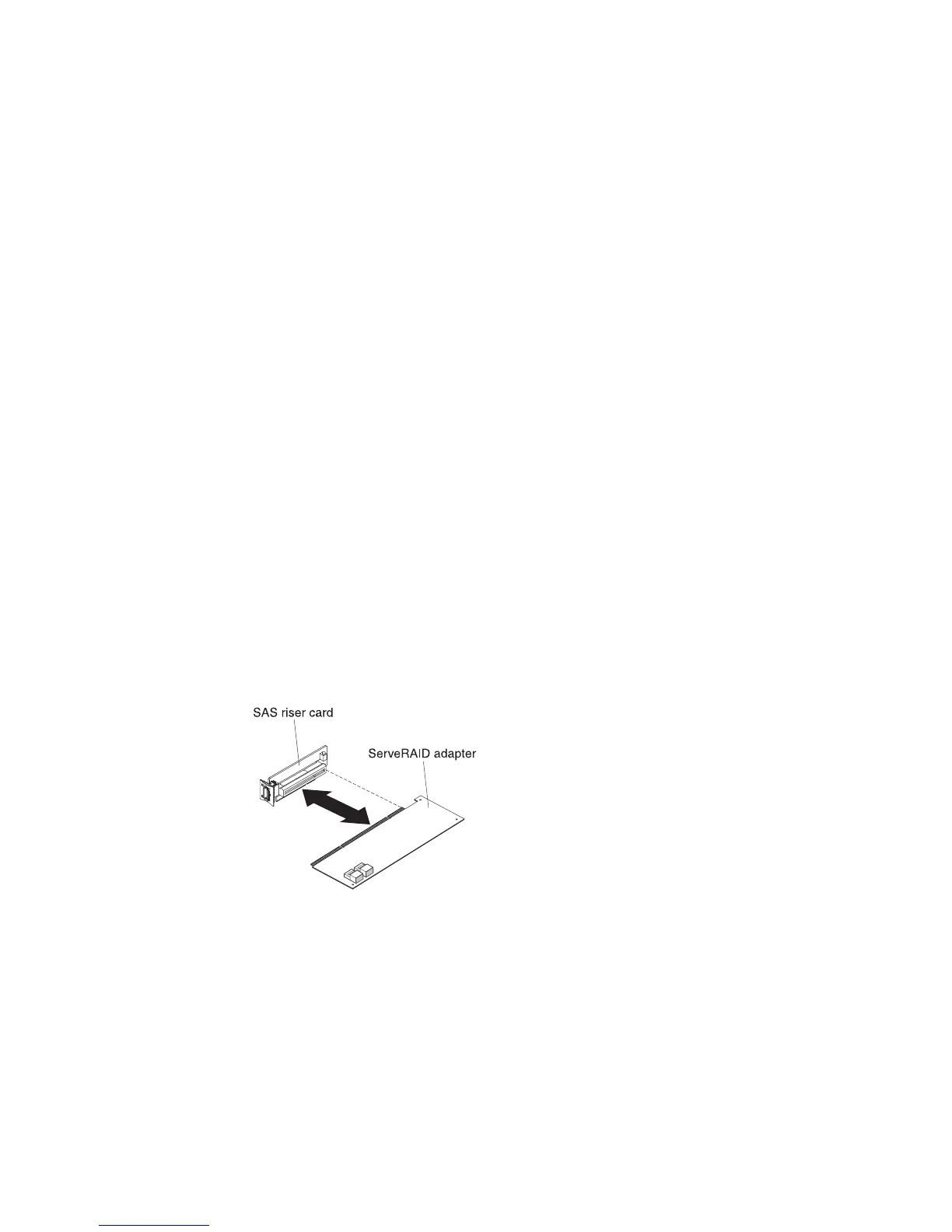